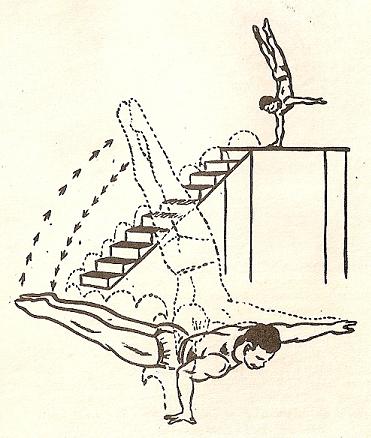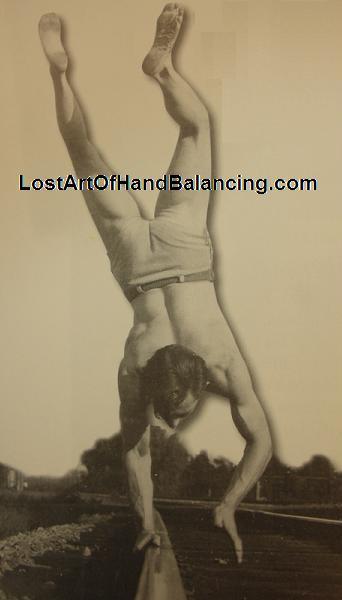In a previous blog post I wrote about changing positions in the handstand and how you can do that to increase your balancing skill.
Similar in many regards is walking on your hands.
Let me preface this by saying, that walking on your hands can be easier then standing still or harder and that depends entirely on how you go about it.
Stumbling around, that is catching yourself from falling by stepping with your hands, is easy to do. But it does not exhibit the control you want and it doesn’t really help you get better.
Most any fit person can manage at least a few steps in this manner. But as I’ve said before, I think its important to learn how to stand still before you begin walking.
The other side, the harder way, is through walking and staying in control the entire time.
If you think about it, all you’re doing is shifting your weight to a single hand for a moment as you take a step with the hand. And then you repeat the process.
That bit makes the move harder than just standing still. You have to constantly correct your balance with every little movement.
At the same time it should serve to work your body better at maintaining its normal position in the handstand. If you allow yourself to get into a place where you can’t balance from you haven’t kept control.
Walking on the hands in the many ways you can do it will make you a better balancer.
Good Luck and Good Hand Balancing,
Logan Christopher
P.S. In Professor Orlick’s Walking and Jumping on Your Hands you’ll find all you need to know on taking your first steps, running, dancing, leaping and much more. By far the best guide to this grouping of hand balancing skills.









